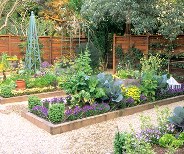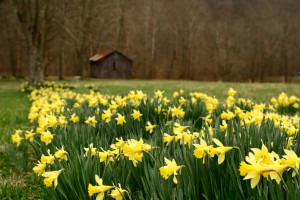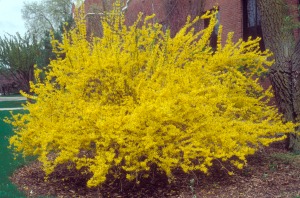 It’s that time of year again- time to get out the tiller, and start those garden plants from seeds to plant in your yearly vegetable garden! Our tips below should get you started:
It’s that time of year again- time to get out the tiller, and start those garden plants from seeds to plant in your yearly vegetable garden! Our tips below should get you started:
Planning your vegetable garden
- Any old spot won’t do when planning where to plant vegetables. The site location is of the utmost importance. It must have at least six hours of full sun each day in order for your food crops to mature properly. No amount of fertilizer, water, or care can replace needed sunshine.
- The soil should be very fertile and well drained so that water does not puddles after a rain storm. Choose a spot close to a water supply for convenience. The garden should be surrounded by a sufficiently high fence with close mesh to keep out small animals. A fence also can serve as a trellis for beans, and other crops that need support.
Containers- Think Outside the Box!
- When planning where to place your garden- be inventive! Some of the most interesting gardens happen in unexpected places.
- Containers- and this can mean just about anything! An old washtub on your deck, I have even seen herbs planted in an old boot.
- Raised Gardens- these are increasingly popular- think about building up your beds using cedar, stone or concrete retaining wall block. It could double as a seatwall- your back will thank you!
- Think Up- why not have your garden travel up? A trellis attached to your container allows peas and beans travel up – saving precious space.
Preparing the Soil for Planting
- Fertile, well prepared soil is necessary for a successful garden. The exact type of soil is not as important as that it be well drained, well supplied with organic matter, reasonably free of stones, and moisture retentive.
- If your garden has already been cultivated and used in past years, there is little to do other than to plow in additional organic material, and fertilizers. The fertilizer may be in the form of composted manure or any good
commercial complete plant food distributed at a rate of 3 or 4 pounds for every thousand square feet of vegetable garden.
Planting Your Vegetable Garden
- Use stakes to mark out where different rows will be planted.
Build trellises or set stakes for climbing plants such as peas and beans. Create mounds on which you will put in the vining plants such as cucumbers, pumpkins and melons. NOTE: Don’t forget to establish your pathways early so that you won’t be walking across areas which will be planted.
You are now ready to sow your seeds, and to put in your vegetable bedding plants. Spacing of plants is critical, so don’t crowd to many plants into the allotted space. Be sure to place a tag or marker on each row or area so that you will know what to
expect will sprout there and when! Water your garden thoroughly the day before you intend to plant.
Maintaining Your Vegetable Garden
- Remember to water your garden extra during dry periods. Most vegetables benefit from an inch or more water each week.
- Mulching between the rows will help keep weeds in check and also keep moisture in the soil.
- Weeds rob your vegetables of water, light and root space, keep them pulled out from the roots whenever you spot them.
- Once you have harvested your crop- put your spent plants in the compost pile to begin the process again for next year!
Read Full Post »
 here are a few:
here are a few:



